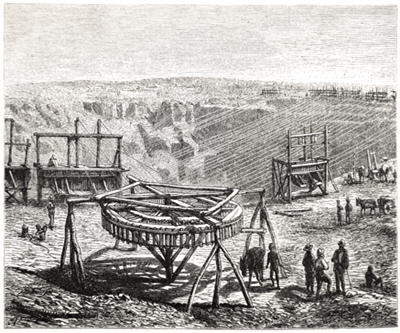
A vulcanologist at the University of British Columbia may have cracked the riddle on how kimberlite magma, and the valuable diamonds it sometimes carries, pushes its way up from deep underground.
Kimberlite magma is heavy and resides at depths of 150 km to 450 kms below the earth’s surface. James K. Russell, in a study published in Nature on Thursday, says that kimberlite magma encounters silica rich minerals. The hot magma releases water and carbon dioxide, which creates a bubbling foam that pushes the kimberlite magma to the surface.
The foam can carry the magma quickly and explosively.
Russell outlines his study in an excerpt:
Kimberlite magmas have the deepest origin of all terrestrial magmas and are exclusively associated with cratons. During ascent, they travel through about 150 kilometres of cratonic mantle lithosphere and entrain seemingly prohibitive loads (more than 25 per cent by volume) of mantle-derived xenoliths and xenocrysts (including diamond). Kimberlite magmas also reputedly have higher ascent rates than other xenolith-bearing magmas. Exsolution of dissolved volatiles (carbon dioxide and water) is thought to be essential to provide sufficient buoyancy for the rapid ascent of these dense, crystal-rich magmas. The cause and nature of such exsolution, however, remains elusive and is rarely specified. Here we use a series of high-temperature experiments to demonstrate a mechanism for the spontaneous, efficient and continuous production of this volatile phase. This mechanism requires parental melts of kimberlite to originate as carbonatite-like melts. In transit through the mantle lithosphere, these silica-undersaturated melts assimilate mantle minerals, especially orthopyroxene, driving the melt to more silicic compositions, and causing a marked drop in carbon dioxide solubility.
Image is from an old illustration depicting transport equipment in the diamond diggings, South Africa, drawn by J. Vavione in Emil Holub’s “Seven Years in South Africa”, published in Vienna, 1881